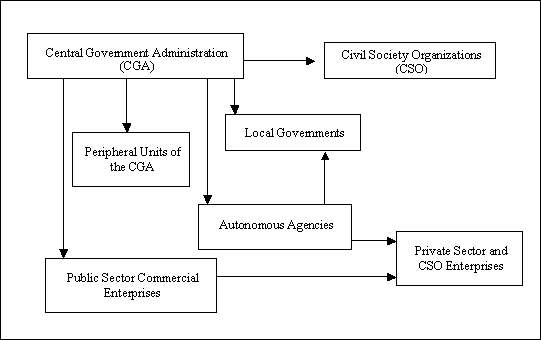1. Introduction & Overview
Decentralization is one of the most important design principles of blockchain technology and the ecosystem of cryptoblockcoins. It shifts power and control away from central authorities to distributed peer-to-peer networks. This ensures transparency, censorship resistance, and fault tolerance, making it possible for digital currencies like Bitcoin and Ethereum to operate without a single point of failure.
- Why important? Because cryptoblockcoins are designed to be trustless systems—you don’t need to trust banks, governments, or middlemen.
- Core promise: Users own their assets, and the system works on mathematically verifiable rules, not human discretion.
2. What is Decentralization?

Decentralization means distributing decision-making, validation, and data storage across a network of participants instead of concentrating it in one authority.
- Centralized system: Single server, single authority (e.g., traditional banking).
- Decentralized system: Many nodes validate, store, and update data independently.
- Distributed ledger: Every participant has a copy of the ledger, and consensus ensures agreement.
History & Background
- Pre-blockchain: Centralized systems like PayPal and SWIFT handled digital money.
- 2008: Bitcoin’s whitepaper by Satoshi Nakamoto introduced blockchain, proving money could be decentralized.
- 2015 onwards: Ethereum expanded decentralization to include smart contracts, fueling DeFi (Decentralized Finance).
3. Core Concepts & Terminology
| Term | Definition |
|---|---|
| Node | A participant (computer/server) in the blockchain network. |
| Consensus | Mechanism ensuring all nodes agree (e.g., Proof of Work, Proof of Stake). |
| Validator/Miner | Node that proposes and verifies transactions. |
| Smart Contract | Self-executing code that runs on decentralized networks. |
| P2P Network | Peer-to-peer system where all nodes interact directly without intermediaries. |
Lifecycle Fit:
- Transaction created → Broadcast to peers → Validated by consensus → Added to block → Replicated across network.
4. Architecture & How It Works
Components
- Client Wallets: Interface for users to interact.
- Nodes: Maintain ledger, validate transactions.
- Consensus Layer: Rules for agreement (PoW, PoS).
- Ledger (Blockchain): Immutable history of transactions.
- Smart Contracts: Logic layer for decentralized applications (dApps).
Workflow (Step-by-Step)
- User signs a transaction with a private key.
- Transaction broadcasted to the network.
- Validators verify transaction authenticity.
- Consensus algorithm selects which block gets added.
- Block is appended, replicated across nodes.
- Finality achieved → transaction confirmed.
Textual Architecture Diagram
+-------------------+ +-------------------+
| User Wallets | ---> | P2P Network |
+-------------------+ +-------------------+
|
+---------+---------+
| Validator/ |
| Miner Nodes |
+---------+---------+
|
+---------+---------+
| Consensus Layer |
+---------+---------+
|
+---------+---------+
| Blockchain |
| Distributed DB |
+-------------------+
Integration with CI/CD or Cloud Tools
- Smart contract code can be tested, deployed, and upgraded using CI/CD pipelines (e.g., Truffle, Hardhat, GitHub Actions).
- Cloud services (AWS, Azure Blockchain Service, GCP) provide node hosting but decentralization is preserved by multiple independent providers.
5. Installation & Getting Started
Prerequisites
- Basic Linux knowledge.
- Installed dependencies: Git, Node.js, Docker.
- Wallet setup (e.g., MetaMask).
Step-by-Step Setup Example (Ethereum Testnet)
# Install dependencies
sudo apt-get update && sudo apt-get install -y build-essential curl git
# Install Node.js
curl -fsSL https://deb.nodesource.com/setup_18.x | sudo -E bash -
sudo apt-get install -y nodejs
# Install Ethereum client (Geth)
sudo add-apt-repository -y ppa:ethereum/ethereum
sudo apt-get update
sudo apt-get install ethereum
# Run a testnet node (Goerli)
geth --goerli --http --http.addr 0.0.0.0 --http.port 8545
- Next: Connect MetaMask → import testnet → deploy a smart contract.
6. Real-World Use Cases
- Bitcoin (BTC): Peer-to-peer digital cash without central banks.
- Ethereum (ETH): Smart contract platform for DeFi, NFTs, dApps.
- Decentralized Exchanges (DEX): e.g., Uniswap, where no central authority holds custody of assets.
- Supply Chain Tracking: VeChain and IBM’s Food Trust use decentralization to prevent fraud.
Industry-Specific Example:
- Healthcare: Decentralized patient records prevent tampering and ensure privacy.
- Finance: Cross-border payments without banks using stablecoins (USDT, DAI).
7. Benefits & Limitations
Benefits
- Transparency (public ledger).
- Security (cryptography, immutability).
- Resilience (no single point of failure).
- Permissionless innovation (anyone can build dApps).
Limitations
- Scalability issues: Slow throughput (Bitcoin ~7 TPS).
- Energy use: PoW consumes high electricity.
- Complex UX: Non-tech users face difficulties with wallets/keys.
- Regulation: Grey area in many countries.
8. Best Practices & Recommendations
- Security Tips:
- Use hardware wallets.
- Multi-sig for enterprise funds.
- Keep smart contracts audited.
- Performance:
- Use Layer-2 solutions (Polygon, Arbitrum).
- Optimize consensus (shift from PoW → PoS).
- Compliance:
- Follow KYC/AML rules where needed.
- GDPR compliance for data on-chain.
9. Comparison with Alternatives
| Approach | Control | Speed | Security | Example |
|---|---|---|---|---|
| Centralized | Single authority | Very high | Weak (single point) | Banks, PayPal |
| Decentralized | Many nodes | Medium | Strong (distributed) | Bitcoin, Ethereum |
| Federated/Hybrid | Few trusted entities | High | Medium | Libra/Diem, Ripple |
When to choose decentralization:
- Needed for censorship resistance.
- Use cases where trust is low.
- When transparency and auditability are essential.
10. Conclusion
Decentralization is the backbone of cryptoblockcoins, enabling them to be secure, transparent, and independent of central authorities. While it has limitations (scalability, regulation), the ecosystem is evolving with Layer-2 scaling, sharding, and improved consensus algorithms.
Future Trends:
- Wider adoption in finance (CBDCs + DeFi).
- Integration into IoT and supply chains.
- Energy-efficient consensus becoming the standard.
Next Steps for Learners:
- Deploy your own blockchain node.
- Experiment with smart contracts.
- Explore decentralized applications (DeFi, DAOs, NFTs).
Resources & Official Docs:
- Bitcoin Whitepaper
- Ethereum Docs
- Hyperledger Fabric Docs